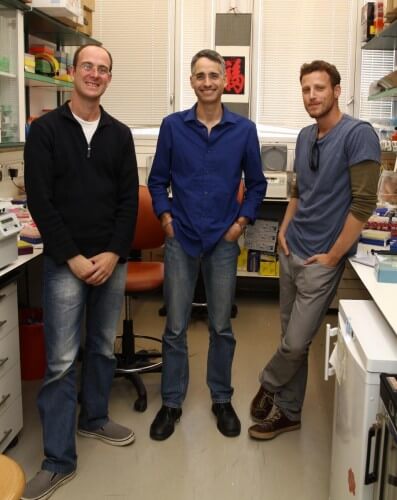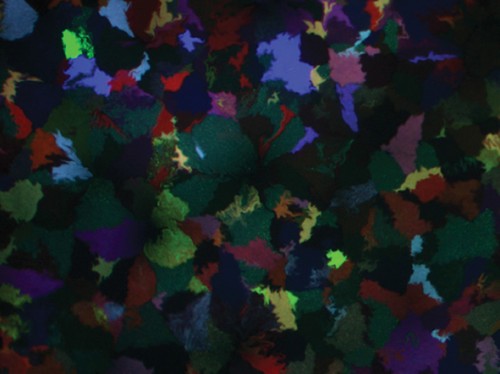Genome mapping of any organism, from a human to a bacterium, provides us with the "software" according to which the The biological "machine".

Genome mapping of any organism, from a human to a bacterium, provides us with the "software" according to which the The biological "machine". But the genes themselves do not actually carry out the life processes. They provide the information needed to build proteins, which in many cases manage a complex system of processes and interactions which Their result is the production of molecules ("metabolites"), which play a central role in the body's metabolism. The creation process of each of the metabolites requires the well-coordinated action of an orchestra, numbering several genes. It is enough for one of these genes to undergo some kind of mutation, or it is expressed more or less, so that the balance in the network Violated - so that a substance necessary for cell activity will not be produced in the necessary amount. The lack of the substance (metabolite), or its excess, may cause various health disorders and diseases.
The production process of the metabolite from the various raw materials usually takes place in several "steps" (biochemical reactions). This is a metabolic pathway. A unique protein (enzyme) is responsible for each step in the pathway. It is a rather complex multi-step chemical process. In one chain, where colorants are formed in nature, the first metabolite that is used as a colorant is lycopene, which, among other things, gives The tomato has its red color. The second in the reaction chain is beta-carotene, which, among other things, gives carrots their orange color, and so on. At the fifth station down (or up) this road, the metabolite astaxanthin is formed, which is an antioxidant that may form a base for medicines and various medical treatments.

Unfortunately, astaxanthin is produced in nature in algae that are very difficult to grow (they are "spoiled", and in order for them to produce the desired metabolite, it is necessary to provide they have strict living conditions). This is exactly where genetic engineering can be used. However, normal genetic engineering, based on inserting a single gene into the genome of a plant, or a bacterium, cannot provide Metabolites, since in order to produce them, the orchestration of several well-coordinated genes is needed. This orchestration is called "metabolic engineering".
Dr. Ron Milo, and research students Niv Antonovsky and Lior Salzbuch, from the Department of Plant Sciences at the Weizmann Institute of Science, decided to deal with this problem, as a kind of side occupation, alongside their efforts to make E.coli bacteria absorb carbon dioxide - Oxygen from the air, as various plants do. Because E.coli bacteria are known and recognized in laboratories all over the world as effective tools and "collaborators" in the field of genetic engineering , they asked themselves whether, and how, it is possible to program an entire network of genes. As a test case, they decided to try to "convince" these bacteria to produce astaxanthin.
In a certain sense, there is a need here to plan a multi-stage work process, similar to production processes in industrial plants. It is necessary to make sure that a certain station will produce the entire amount that the next station can handle - within Avoiding overproduction that would cause a "bottleneck" to form, or from insufficient production that would result in low output. The adjustment is carried out with the technique of genetic engineering, in several genes at the same time, which results in the formation of a very large number of Varieties, among which the desired variety must be located and identified.
The scientists used a method that makes it possible to make a fine and efficient adjustment of the intensity of gene expression. This "power button" is, in fact, a genetic segment located at the beginning of the gene, and to which the ribosome attaches at the beginning of the process of translation The genetic information for a protein molecule. Small changes in this segment create significant changes in the intensity of the expression of the gene.
In the first stage, they randomly changed the "power button" of the genes involved in the astaxanthin production process, and inserted the The genetically engineered genes for E.coli bacteria. This is the stage where the bacteria began to produce the engineered enzymes, and the enzymes began to produce the various metabolites along the pathway the metabolic But how can you distinguish between the different bacteria? How do you know which of them produces astaxanthin most effectively? This is where nature comes to the aid of scientists. Since astaxanthin is characterized by a pink color, it was possible to check and see which of the bacteria (or colonies of bacteria) are stained with the color The most suitable pink - and thus to identify the bacteria in which the most efficient "production lines" were created.
The most promising strains underwent biochemical analysis to quantify the levels of astaxanthin produced in the bacteria. In fact, the metabolic "tuning" carried out by the institute's scientists yielded astaxanthin in an amount five times greater than the "product" produced by other research groups in the world, who also used metabolic engineering in bacteria. This research was recently described in an article published by the scientists in the scientific journal Nucleic Acids Research.
The scientists hope that this method can be used to increase the efficiency of processes for the production of bioactive substances and drugs in the processes of Metabolic engineering.

First right
In the 70s of the last century, Prof. Mordechai Evron and his research partners at the Weizmann Institute of Science succeeded in developing a way For a significant increase of the carotene-beta metabolite in Alga Dunaliella. This discovery is currently the basis of a successful industry that produces beta-carotene in algae, and markets it mainly as a food supplement in Japan
Between nature and color
Astaxanthin gives salmon and flamingos their pink color. The fish and birds eat the algae that produce the metabolite - and thus become colored in its color. In the farms where salmon fish are raised for food, there is no algae, and the flesh of the fish is white. To restore its pink color, which helps to market the fish, breeders add astaxanthin to the fish food.
